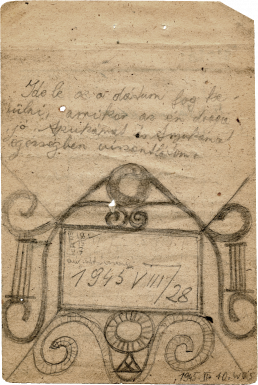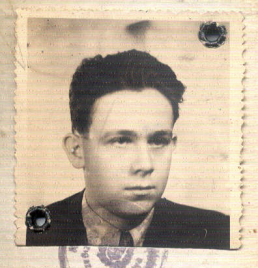Transferred from Auschwitz to the Harz Mountains: Jewish, Sinti and Roma children
The evacuation of the “gypsy family camp” in Auschwitz-Birkenau began in April 1944. By August, the SS had transferred about 1500 male Sinti and Roma to the Mittelbau-Dora Concentration Camp. Among them were many teenagers and even some children. Almost all of them were taken to the subcamps Ellrich-Juliushütte and Harzungen, where, like the adults, they were assigned to exhausting forced labor on construction sites.
In June 1944, the SS deported 1000 Hungarian Jews from Auschwitz to the Harz Mountains. More than a third of them were not yet adults, with the youngest only 12 years old. The SS took most of them to the notorious Ellrich-Juliushütte subcamp. In November 1944, there were 260 Hungarian-Jewish children and adolescents in the camp.
The number of young Jewish prisoners in the Mittelbau camps further increased after January 1945, when evacuation transports from Auschwitz began to arrive. The youngest prisoner was Herbert Noah. He was born in the railway wagon used to transport the prisoners two days before it arrived in Dora. His further fate is not known.
Liberated child in the Boelcke garrison in Nordhausen, mid-April 1945.
In January 1945, the SS began using the garrison as a subcamp of the Mittelbau-Dora Concentration Camp for prisoners who were not fit for work. It was here that the SS brought many of the utterly exhausted prisoners who arrived in January and February 1945 on evacuation transports from Auschwitz and Groß-Rosen.
(Mittelbau-Dora Memorial)
Buchenwald Concentration Camp prisoner registration file for Leo Spiegel, 24 May 1944.
Leo Spiegel was a Hungarian Jew who was transferred from Auschwitz to Buchenwald and from there to Dora in May 1944, when he was 14 years old. In July 1944, the SS took him to the Ellrich-Juliushütte subcamp, where he was a forced laborer on construction sites.
(Arolsen Archives)
Dora camp infirmary file on Sandor Kaufmann, 26 December 1944 to 6 February 1945.
Sandor Kaufmann, a Hungarian Jew, was transferred from Auschwitz via Buchenwald to Dora in May 1944 at the age of only 12. There he was a forced laborer in the underground rocket factory. He died in the infirmary on 6 February 1945. Sandor Kaufmann is the second-youngest documented fatality at the Mittelbau-Dora Concentration Camp.
(Arolsen Archives)
"My cousin, he was also there, he was also Sinto. And he was the foreman there, so to speak, and he always said to me: 'Franz, you stay with me, I'll take care of you.' And he was all right."
Report by Franz Rosenbach, 2005.
The SS deported the Sinto Franz Rosenbach (1927-2012) from Auschwitz via Buchenwald to Mittelbau-Dora in April 1944, when he was 16. Many Sinti and Roma were taken as family groups to the concentration camps. The help of his cousin, who was a prisoner functionary, saved Franz Rosenbach.
(Franz Rosenbach, Der Tod war mein ständiger Begleiter, Munich 2005)
Excerpt from the notes of survivor Alex Hacker, 10 February 1945.
Alex Hacker, an 18-year-old Jew, was deported from Hungary to Mittelbau-Dora at the end of 1944. He kept a diary while in the camp. He prepared one page so that he could write the date of his return to his parents after liberation.
Translation: “And down here I will write the date when I will see my dear and beloved mother and father again in good health.”
(Private property Alex Hacker)
Alex Hacker im Displaced-Persons-Camp Bergen-Belsen, 1945.
In April 1945, Alex Hacker arrived at the Bergen-Belsen Concentration Camp on an evacuation transport. There he was liberated by British troops. In the summer of 1945, he was reunited with his parents in Budapest.
(Private property Alex Hacker)
Transport list of an evacuation transport with 512 women from Auschwitz to Mittelbau-Dora, 28 January 1945.
Entry for Herbert Neumann: place of birth: Mittelbau Concentration Camp, occupation: without occupation. The women were transferred to the Bergen-Belsen Concentration Camp a few days later. That Herbert Noah survived is extremely unlikely.
(Arolsen Archives)
Children in the Mittelbau-Dora Concentration Camp
Trapped underground:
The tunnel expansion
The first transports to leave Buchenwald for Mittelbau-Dora in the fall of 1943 included several young people. Almost all of them were political prisoners.
From rocket plant to construction company: The Mittelbau-Dora Concentration Camp
After a British air raid on the Peenemünde Army Station, the Ministry of Armaments ...








